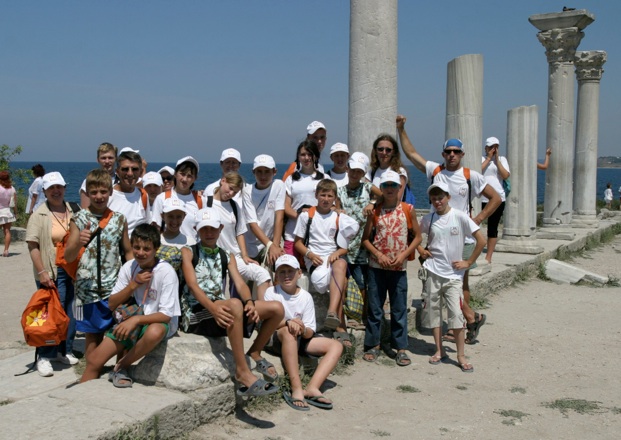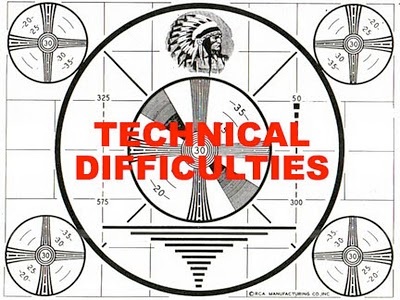2006

In the summer I made my annual trip to Ukraine. This year UCARE organized its own summer camp in Crimea1. We had two camps of twenty children each2. I went to the first camp, along with Marianna Lis, Askold and Nadya Haywas, and several volunteers from Ukraine3. I was the camp doctor, taught pysanky and photographed all the activities.
This was the first UCARE camp, and it was a challenge. We had to work with a Russian-speaking staff in a Russified part of Ukraine. The children from Chernihiv were in the Chornobyl exposure zone, some had related illnesses and all had to avoid the midday sun. The group from Zakarpattya was very poor and many spoke only the local dialect. Several children from each group had emotional problems and learning disabilities, the consequences of difficult lives and institutionalization.
Our goal, at camp, was to keep the children busy, to teach them to respect themselves and others, and to give them respect, affection, and approbation. We wanted them to better understand their Ukrainian heritage. The camp program was in Ukrainian, and our camp was an arts camp, stressing creativity and self-expression. We taught painting, drawing, puppet making, and macrame, as well as the traditional Ukrainian arts of beadwork (gerdany) and pysanka-making.
There were outdoor activities as well, in the fresh sea air. Each morning kozak Yura would lead a "ruhanka"; he also organized soccer games and taught the "hopak," kozak martial arts. An "olympiad" was organized, with all sorts of races and competitions. There were frequent trips to the sea to go swimming – Crimea in mid-summer gets quite hot. And there were several hikes through the Crimean mountains.
There were several local excursions, including the Yalta waterfront, with its carnival-like rides and attractions, the Nikita botanical gardens, the museum of poetess Lesia Ukrainka, and the Aquatorium, a water mammal performing arts center. A boat ride in the Black Sea was arranged as well, an excursion from the docks of Nikita to the Swallow's Nest, a landmark on the other side of Yalta.
There were two longer excursions as well, both to help the children learn about and appreciate Ukrainian history and the variety of peoples who have lived on our land and built Ukraine. The first was to the ruins of Chersonesus, an ancient Greek settlement near Sevastopol. There we were shown around by the director of the dig; we got to view active excavations, see real human bones, and to learn how people had lived on Ukrainian soil 2000 years ago. We got to not only clamber around the ruins, but also to see the site upon which Volodymyr Velikiy was said to have been baptized in the 10th century.

Our campers in Chersonesus
Another excursion took us to central Crimea, where we first visited Chufut Kale, an old fortress town built in a series of caves in the mountains. It was occupied at various times by Khazars, Turks and Karaites (an old Jewish sect).

Next we stopped in at the Uspenska Lavra, an ancient church (the oldest in Ukraine) built into the side of a mountain. Finally we went to the Tatar town of Bakhchysaray, where we visited the palace of the Khan (with its museum, cemetery and harem) and the market.

At the palace of the khan in Bakhchysaray
Our facility was in town, rather than out in the countryside, so we had no opportunity to have campfires fin the evenings. Instead we organized other activities. One night there was a reading of Lesia Ukrainka's poetry. Another night we had karaoke. There was a quiz night–"Name that (Ukrainian) Tune–where we tested our kids' knowledge of modern Ukrainian pop music. We even had a barbecue and disco at the end of camp.
The camp had to end eventually, and it did, with tears all around. In America, the end of camp is usually bittersweet, with some sadness at having to say goodbye to new friends, but most campers happy to go back home to our families and our comfortable beds. Not so here. There was true sadness and lots of wailing and tears. After two weeks of being loved and respected, of being treated as family, these children really hated to go back to their institutions.
In past years, children have often told me that the two weeks they spent at camp were "the best weeks of their entire life." Some of our past campers have gone on to finish school, and become volunteers themselves, including several of our Ukrainian volunteers. Even if they never come back to another camp, the children will have these memories to look back on in the future, to know that someone out there cares for them.
___________
-
1.Photos and much more information here.
-
2.The children were from internaty, those orphanage/schools that warehouse the hundreds of thousands of children in Ukraine who have no home to call their own. Some are true orphans, both parents having died. Others have been removed permanently from abusive or neglectful parents. Still others come from large households with parents too poor to support them. Many have had to deal with the results of parental alcohol and drug abuse, and the ravages of AIDS and Chernobyl. Many have emotional and psychological problems. All are needy, all are deserving. Our children came from the far corners of Ukraine – Zakarpattya, Chernihiv, and Odeschyna. Most had never been to the sea before. Many had never been on a train before. Some had never been away from their home town before. And a few had never experienced the luxury of indoor plumbing or a hot shower before.
-
3.Two of the volunteers, Daria and Ruslan, had attended camps with me in the past. The had come as campers, finished university, and had been volunteering with Priyateli Ditey and UCARE for years. Daria spent 6 months in the USA helping us raise money and organize the Hearts for Art program.
Main 2006 Page
Summer Camp in Crimea




